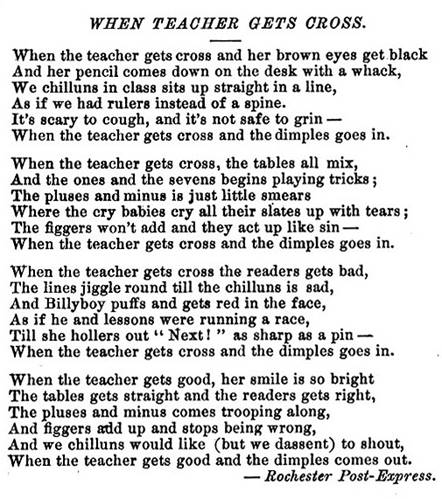Background: Declamation
From the beginnings of democracy in ancient Greece, societies who proclaimed or elected their leaders wanted their people to comprehend the art of rhetoric - the ability to persuade others through words and argument. If rhetoric prevailed, then the vote of the populace might be swayed by good ideas, not by personality or bribes.
Rhetoric did not always prevail, but in the history of Europe its thread ran from Greece to Rome, through the Renaissance, and eventually into the modern era. Along the way, over the centuries when most people were illiterate, making a speech was the only tool by which ideas could be presented to the masses. Certain ways of formal speaking in formal settings became standard, which resulted in an emphasis on teaching declamation - a rather theatrical manner of speaking, which (in theory) engages the audience by using physical gestures, and by carefully modulating one's voice.
To us, this emphasis on how to speak one's words, rather than on choosing them, may seem a bit silly. But in the Victorian era, Declamation was taught early, even in the lower grades of elementary school. There were established age-appropriate readings, often in the form of poems, to be declaimed by children. For older children, these readings sought to evoke a noble sentiment; for younger children, they evoked simple sadness or joy. All of them tried to promote morals and proper social behavior. The idea was that by learning early how to hold the attention of an audience, a child might grow up to someday be a respected orator, like William Jennings Bryan. Material to read was in such demand that by the 1880s, for twelve cents one could order by mail one of the several volumes of Standard Recitations by Best Authors from a publisher in lower Manhattan.
The following piece - I cannot in good conscience call it a poem - was read at the school dedication on Nicholai Street by Richard Sutter, 12, son of local stone mason Daniel Sutter. It had appeared in the Journal of Education for May 21, 1896, where it was printed alongside an article called "Teaching Children to Think." Some Hicksville educator had likely seen it in that journal, and set it aside, to be declaimed by a student on some future suitable occasion.

found online at https://www.jstor.org/stable/44047740
***

